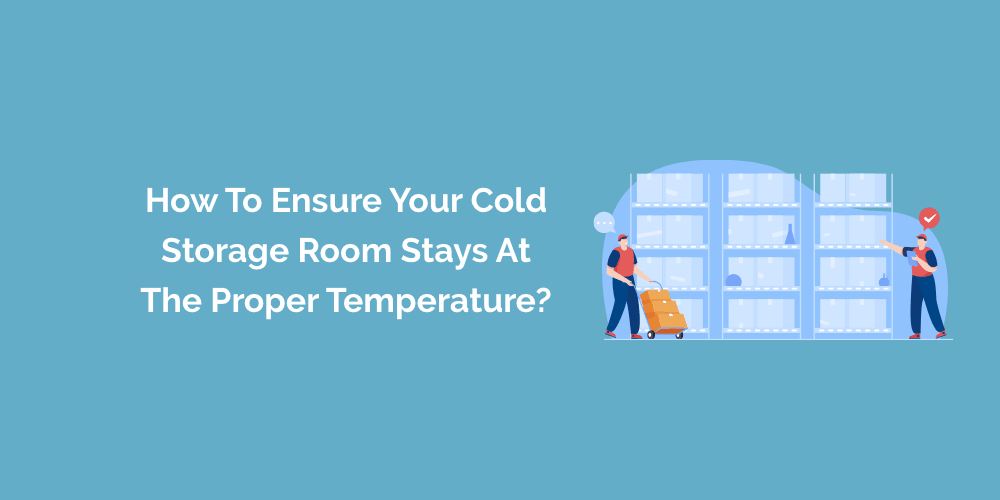The Impact of Temperature in Cold Rooms:
Cold room storage is an essential part of the food distribution chain. Providing temperature controlled storage is integral to maintaining the integrity of food. When unsafe temperature fluctuations occur, food companies open themselves up to the potential for foodborne illness outbreaks and the financial burden of non-compliance fines and lost inventory. Bacteria that thrive in warmer temps are among the biggest headaches for food distribution operations managers. Therefore, prevention is key to thwarting potential cold room storage problems.
The Impact of Temperature:
Products that require cold room storage include meat, eggs, dairy products, frozen foods, fish, vegetables, fruit and beverages. Optimal temperatures vary depending on the type of food being stored. Temperature has a big impact on the microbial and chemical processes that take place within food. The lower the temperature, the slower the microbial growth. With meat, for example, the process that cause spoilage begin the moment the animal is slaughtered. Fruit and vegetables, however, are still “alive” when harvested in terms of the metabolic processes that are taking place. Therefore, storing them at the proper humidity and temperature will delay deterioration. Dairy products and beverages must be stored below a certain temperature to prevent chemical and microbial processes that would spoil the food. Optimal growing conditions for many microbes are above 32 °F. Other microbes can multiply at temperatures as low as 10.40 °F. Deep-freezing a product can kill anywhere between 10 to 90 percent of the microorganisms (including parasites,) but it is not possible to completely sterilize a product by freezing it. To deep-freeze, storing the product at -4 °F for up to a week is generally sufficient. Temperature also impacts chemical processes. The lower the temperature the slower these reactions, but most chemical processes cannot be completely halted by lowering the temperature. They can continue until the temperature reaches absolute zero (-457.87 °F). When storing some products, including beef, certain tissue degradation is actually desirable. Cooling it too quickly can cause damage to the product. For fruits and vegetables, the temperature influences the metabolism as well as the amount of heat generated by respiratory processes. Suffice to say, there are many considerations when it comes to determining the optimal cold room storage temperatures for different foods. Once you’ve determined optimal temperatures for the foods you’re storing, it’s not just as simple as setting the temperature in your cold storage facility and forgetting it. You need to constantly monitor the conditions in which your food is being stored. This provides the best assurance that temperatures don’t rise to an unsafe level. While many facilities use temperature data loggers, these devices are not true cold room monitoring devices. Data loggers alert managers of a problem only after it’s occurred. At that point, it’s too late and food inventory is already lost.
Why You Need Real-Time Temperature Monitoring Sensor?
Providing temperature controlled storage can be a challenge but one that can be eased by using a real-time temperature monitoring solution. These Sensor can alert managers to a problem before it becomes financially devastating. While many managers think about temperature monitoring as a necessity only while food is in transit, temperature variances in cold room storage facilities can cause problems before the food ever makes its journey. With a wireless temperature monitor you can keep tabs on one facility or many with the peace of mind that you’ll be alerted to any temperature variances the minute they occur. These devices allow you to keep tabs on your cold room food storage even when you’re not physically present. There are a number of temperature monitors on the market, but when it comes to monitoring your cold room in real time, you don’t want to skimp. Look for a monitor that has all of the features necessary to make it an effective and useful addition to your business. Real-time monitoring will allow you to track and record what’s happening with your company’s cold storage at all times.
Here are 4 important features to look for in a quality real-time temperature & humidity sensor:
- Choose a humidity sensor that measures humidity. As mentioned above, humidity impacts a number of foods including fruits and vegetables. Be sure the sensor you’re using measures humidity levels, not just temperature.
- Choose a sensor that has an associated mobile app and alerts. This allows you to check your cold room storage conditions at any time and on the go.
- Choose a sensor that sends SMS/text message alerts. This will immediately notify the appropriate person if temperatures in this cold room storage facility exceed safe parameters.
- Select a Wifi temperature and humidity sensor that allows easy installation. Portable wireless temperature sensor can easily be moved to different areas of the cold storage room, or to additional cold rooms in your larger facility. This is a convenience you’ll be glad to have in your cold chain.








